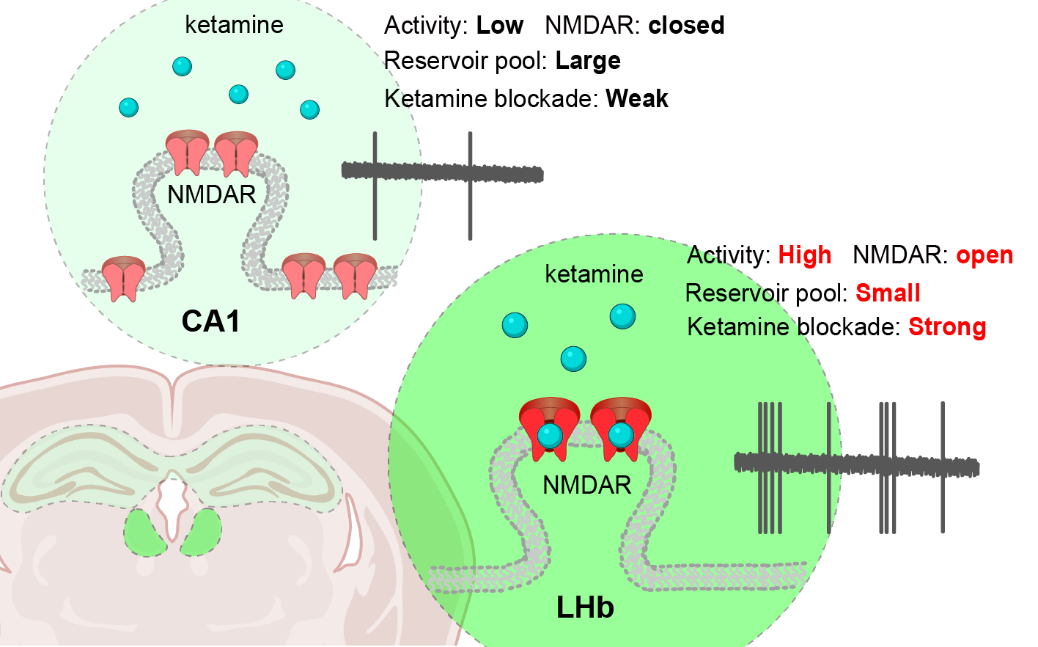The research team led by Prof. Hailan Hu has recently published an article titled Brain region–specific action of ketamine as a rapid antidepressant on Science online on Aug 9th, 2024. This research revealed ketamine blocks NMDARs in vivo in a brain region– and depression state–specific manner.
The use-dependent nature of ketamine as an NMDAR blocker converges with local brain region properties to distinguish the LHbas a primary brain target of ketamine action.
Ketamine has been found to have rapid and potent antidepressant activity. However, despite the ubiquitous brain expression of its molecular target, the N-methyl-D-aspartate receptor (NMDAR), it was not clear whether there is a selective, primary site for ketamine’s antidepressant action. We found that ketamine injection in depressive-like mice specifically blocks NMDARs in lateral habenular (LHb) neurons, but not in hippocampal pyramidal neurons. This regional specificity depended on the use-dependent nature of ketamine as a channel blocker, local neural activity, and the extrasynaptic reservoir pool size of NMDARs. Activating hippocampal or inactivating LHb neurons swapped their ketamine sensitivity. Conditional knockout of NMDARs in the LHb occluded ketamine’s antidepressant effects and blocked the systemic ketamine–induced elevation of serotonin and brain-derived neurotrophic factor in the hippocampus. This distinction of the primary versus secondary brain target(s) of ketamine should help with the design of more precise and efficient antidepressant treatments.

Brain region–specific action of ketamine as a rapid antidepressant
Website: https://science.org/doi/10.1126/science.ado7010
HAILAN HU'S RESEARCH GROUP: For social animals, emotions and health are regulated by various social behaviors. Hailan Hu's group is dedicated to studying the neural basis and plasticity mechanisms of emotion and social behavior. They use cutting-edge techniques including imaging, electrophysiology (both in vitro and in vivo), molecular genetics, and optogenetics to conduct deep analysis of emotion- and social behaviors- and their related neural circuits.




 Location :
Location : 

